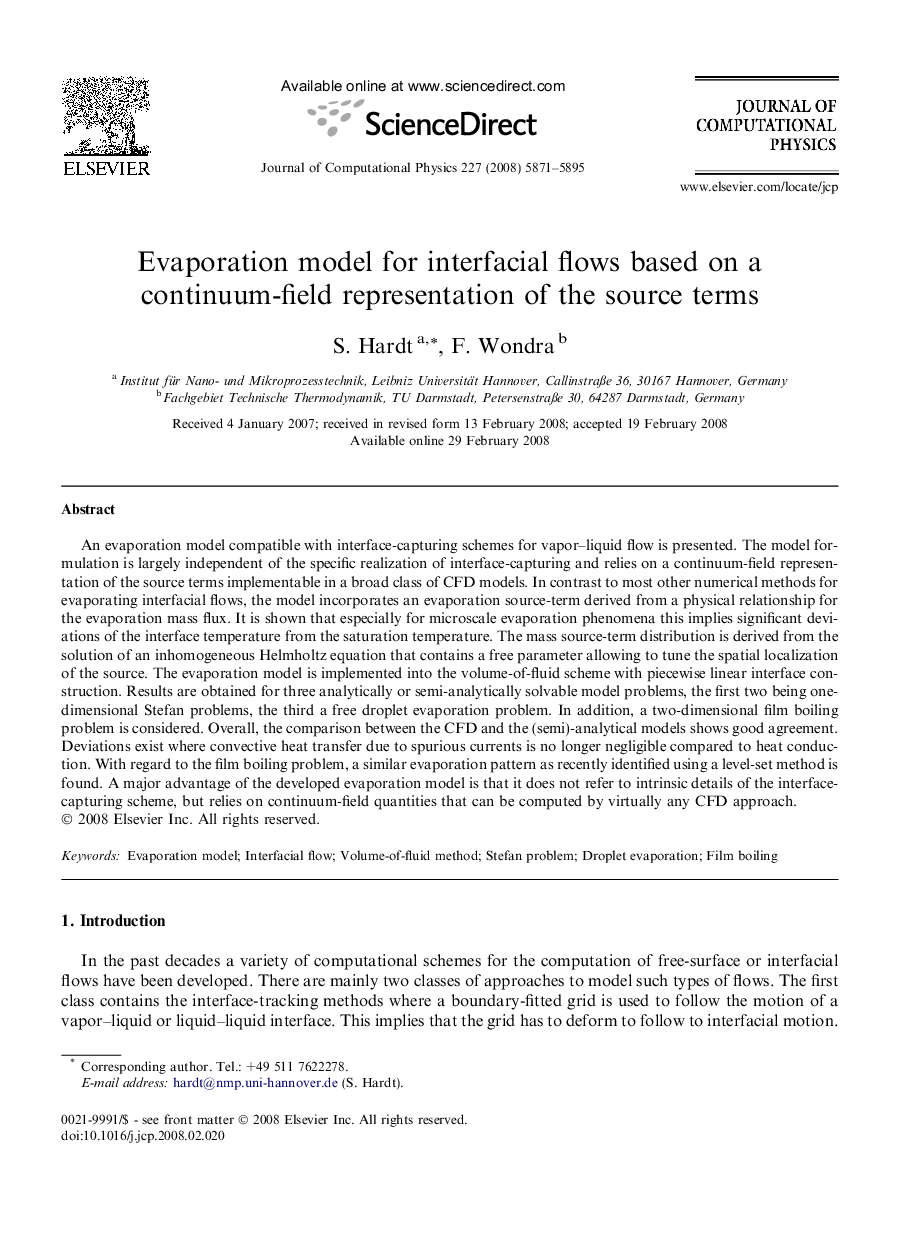| Article ID | Journal | Published Year | Pages | File Type |
|---|---|---|---|---|
| 522033 | Journal of Computational Physics | 2008 | 25 Pages |
An evaporation model compatible with interface-capturing schemes for vapor–liquid flow is presented. The model formulation is largely independent of the specific realization of interface-capturing and relies on a continuum-field representation of the source terms implementable in a broad class of CFD models. In contrast to most other numerical methods for evaporating interfacial flows, the model incorporates an evaporation source-term derived from a physical relationship for the evaporation mass flux. It is shown that especially for microscale evaporation phenomena this implies significant deviations of the interface temperature from the saturation temperature. The mass source-term distribution is derived from the solution of an inhomogeneous Helmholtz equation that contains a free parameter allowing to tune the spatial localization of the source. The evaporation model is implemented into the volume-of-fluid scheme with piecewise linear interface construction. Results are obtained for three analytically or semi-analytically solvable model problems, the first two being one-dimensional Stefan problems, the third a free droplet evaporation problem. In addition, a two-dimensional film boiling problem is considered. Overall, the comparison between the CFD and the (semi)-analytical models shows good agreement. Deviations exist where convective heat transfer due to spurious currents is no longer negligible compared to heat conduction. With regard to the film boiling problem, a similar evaporation pattern as recently identified using a level-set method is found. A major advantage of the developed evaporation model is that it does not refer to intrinsic details of the interface-capturing scheme, but relies on continuum-field quantities that can be computed by virtually any CFD approach.
